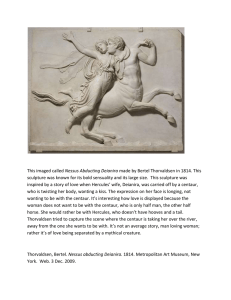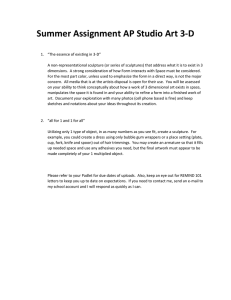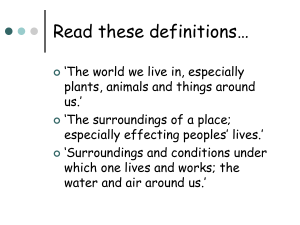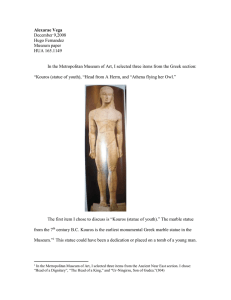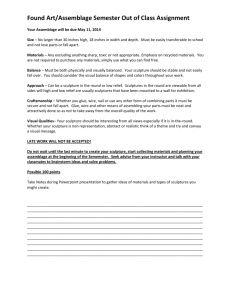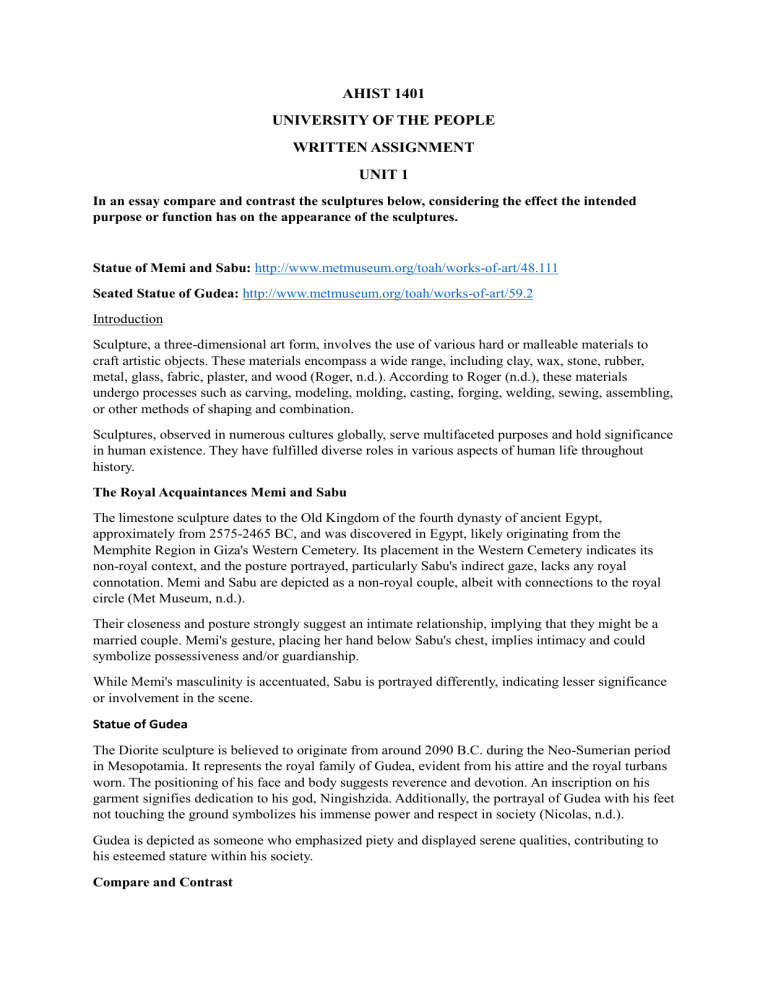
AHIST 1401 UNIVERSITY OF THE PEOPLE WRITTEN ASSIGNMENT UNIT 1 In an essay compare and contrast the sculptures below, considering the effect the intended purpose or function has on the appearance of the sculptures. Statue of Memi and Sabu: http://www.metmuseum.org/toah/works-of-art/48.111 Seated Statue of Gudea: http://www.metmuseum.org/toah/works-of-art/59.2 Introduction Sculpture, a three-dimensional art form, involves the use of various hard or malleable materials to craft artistic objects. These materials encompass a wide range, including clay, wax, stone, rubber, metal, glass, fabric, plaster, and wood (Roger, n.d.). According to Roger (n.d.), these materials undergo processes such as carving, modeling, molding, casting, forging, welding, sewing, assembling, or other methods of shaping and combination. Sculptures, observed in numerous cultures globally, serve multifaceted purposes and hold significance in human existence. They have fulfilled diverse roles in various aspects of human life throughout history. The Royal Acquaintances Memi and Sabu The limestone sculpture dates to the Old Kingdom of the fourth dynasty of ancient Egypt, approximately from 2575-2465 BC, and was discovered in Egypt, likely originating from the Memphite Region in Giza's Western Cemetery. Its placement in the Western Cemetery indicates its non-royal context, and the posture portrayed, particularly Sabu's indirect gaze, lacks any royal connotation. Memi and Sabu are depicted as a non-royal couple, albeit with connections to the royal circle (Met Museum, n.d.). Their closeness and posture strongly suggest an intimate relationship, implying that they might be a married couple. Memi's gesture, placing her hand below Sabu's chest, implies intimacy and could symbolize possessiveness and/or guardianship. While Memi's masculinity is accentuated, Sabu is portrayed differently, indicating lesser significance or involvement in the scene. Statue of Gudea The Diorite sculpture is believed to originate from around 2090 B.C. during the Neo-Sumerian period in Mesopotamia. It represents the royal family of Gudea, evident from his attire and the royal turbans worn. The positioning of his face and body suggests reverence and devotion. An inscription on his garment signifies dedication to his god, Ningishzida. Additionally, the portrayal of Gudea with his feet not touching the ground symbolizes his immense power and respect in society (Nicolas, n.d.). Gudea is depicted as someone who emphasized piety and displayed serene qualities, contributing to his esteemed stature within his society. Compare and Contrast Memi and Sabu's sculpture was believed to hold connections between the afterlife and the living world, ensuring the couple's union beyond death. In contrast, Gudea's sculpture also carries spiritual symbolism, reflecting calmness and tranquillity. Gudea dedicated his life to the gods and was perceived as someone who bridged the gap between ordinary people and deities (Anonymous, 2013). Moreover, while Memi and Sabu's sculptures portray a loving couple with a focus on Memi's masculinity, Gudea's sculptures reinforce themes of piety and authority. These distinctions highlight the diverse spiritual and cultural representations conveyed through these ancient artworks. Conclusion: Art tells us about the tales in their instances, instances, and cultures, reflecting the sector they created. Those works of artwork did simply that and furnished records of approximately historic history. The classifications of Royals and Non-Royals are nonetheless different; however, those artistic endeavors proportion an unusual place spirituality amongst all three (Memi, Sabu, Gudea) and of their hearts and that created a bond and a concrete relationship. Reference: Anonymous. (2013 Aug 02). Comparison of Statue Memi and Sabu and the Statue of Gudea. Retrieved from https://rochjam.blogspot.com/2013/08/comparison-of-statue-memi-and-sabuand.html. Nicolas, B. (n.d.). Gudea, prince of Lagash, a seated statue dedicated to the god Ningishzida. Retrieved from https://www.louvre.fr/en/oeuvre-notices/gudea-prince-lagash-seated-statuededicatedgod-ningishzida Rogers, L.R. (n.d.). Sculpture. Encyclopedia Britannica. Retrieved from https://www.britannica.com/art/sculpture The Metropolitan Museum of Art. (2000-2019). The royal acquaintances Memi and Sabu. Heilbrunn: Timeline of ArtHistory. Retrieved from https://www.metmuseum.org/toah/works-ofart/48.111/.
